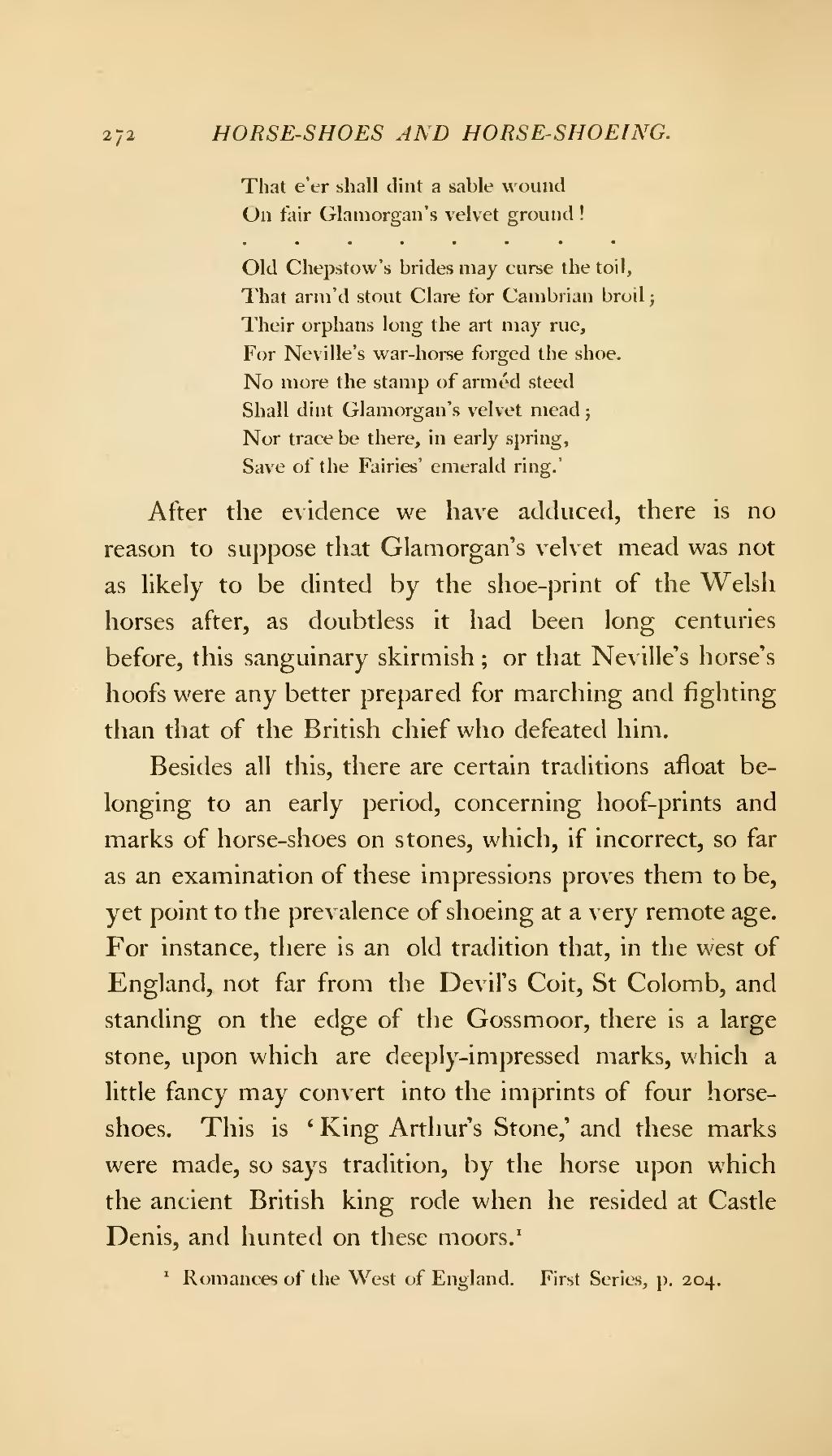That e'er shall dint a sable wound
On fair Glamorgan's velvet ground!
· · · · · · · ·
Old Chepstow's brides may curse the toil.
That arm'd stout Clare for Cambrian broil;
Their orphans long the art may rue.
For Neville's war-horse forged the shoe.
No more the stamp of arméd steed
Shall dint Glamorgan's velvet mead;
Nor trace be there, in early spring,
Save of the Fairies' emerald ring.'
After the evidence we have adduced, there is no reason to suppose that Glamorgan's velvet mead was not as likely to be dinted by the shoe-print of the Welsh horses after, as doubtless it had been long centuries before, this sanguinary skirmish; or that Neville's horse's hoofs were any better prepared for marching and fighting than that of the British chief who defeated him.
Besides all this, there are certain traditions afloat belonging to an early period, concerning hoof-prints and marks of horse-shoes on stones, which, if incorrect, so far as an examination of these impressions proves them to be, yet point to the prevalence of shoeing at a very remote age. For instance, there is an old tradition that, in the west of England, not far from the Devil's Coit, St Colomb, and standing on the edge of the Gossmoor, there is a large stone, upon which are deeply-impressed marks, which a little fancy may convert into the imprints of four horseshoes. This is 'King Arthur's Stone,' and these marks were made, so says tradition, by the horse upon which the ancient British king rode when he resided at Castle Denis, and hunted on these moors.[1]
- ↑ Romances of the West of England. First Series, p. 204.
